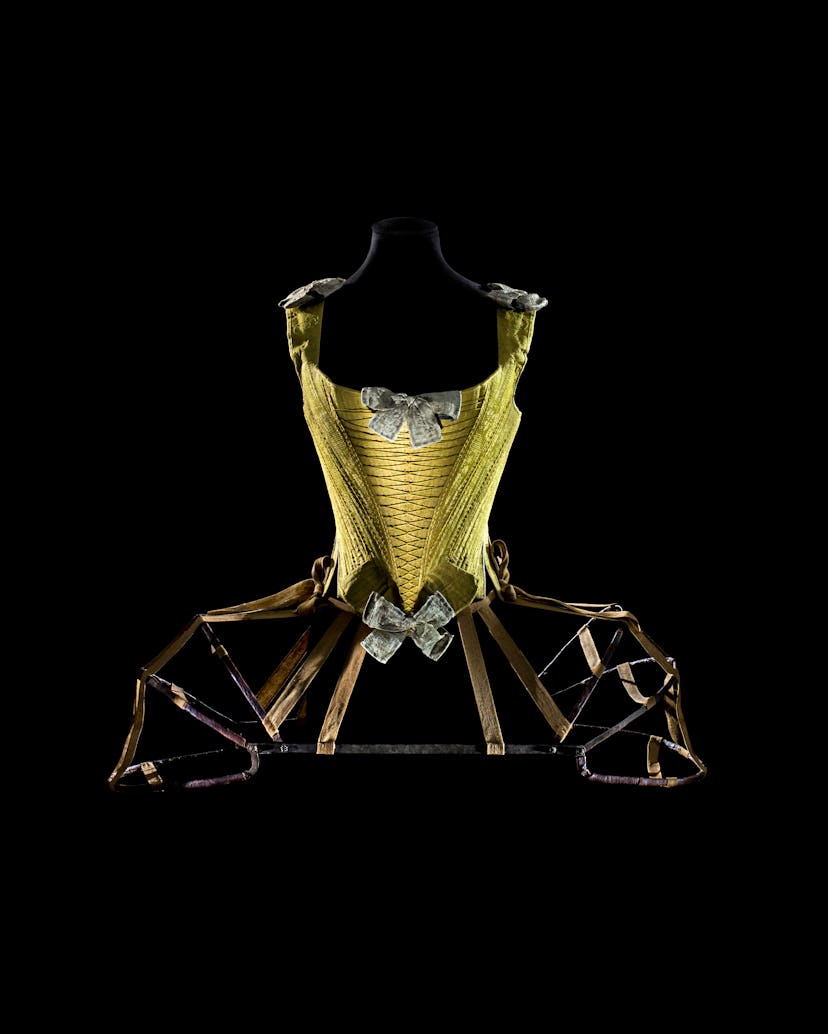The Shape of Things

There’s never a shortage of blockbuster exhibitions about clothing and costume design. Now, what lies beneath is getting its due in Fashioning the Body: An Intimate History of the Silhouette. The show, which originated at the Musée des Arts décoratifs in Paris in 2013, arrives at the Bard Graduate Center in New York in April and celebrates the corsets, push-ups, bustiers, and girdles that have altered the body—and influenced designers—throughout history. Here, a look at the intimate offerings.
Fashioning the Body: An Intimate History of the Silhouette is on view at the Bard Graduate Center from April 3rd through July 26th.
1
Whalebone corset. France, ca. 1740–60. Silk satin damask, braided silk, linen bows covered in silk and decorated with metallic thread, whalebone, linen lining. Photographed by Patricia Canino.
2
Bra. France, ca. 1925. Cotton tulle, silk satin, elastic, lace. Photographed by Patricia Canino.
3
Langtry. Bustle known as a “strapontin.” France, 1887. Metallic armature, springs and eyelets, cotton serge, cotton straps and laces, crocheted lace. Inscription: “Langtry. Brevetée [. . . ].” Photographed by Patricia Canino.
4
Sleeve plumpers. English, ca. 1830. Cotton, down stuffed. Photographed by Bruce White.
5
“Exquisite Form” bra‐bustier. United States, ca. 1950. Rayon satin, Nylon, mesh, elasticized fabric, flannel, plastic, metal. Inscription: “Exquisite Form Brassieres.” Photographed by Patricia Canino.
6
Bustle. Europe, ca. 1880. Woven rattan, cotton satin, metal. Photographed by Patricia Canino.
7
Girdle. France ca. 1920-30. Cotton, elastic, metal. Photographed by Homeros Gilani.
8
Double panniers with pockets. France, 1775–80. Linen, with rattan hoops. Photographed by Patricia Canino.
9
Corset. United States, ca. 1860–70. Cotton interwoven with wood and whalebone stays, cotton embroidery, metal. Photographed by Patricia Canino.